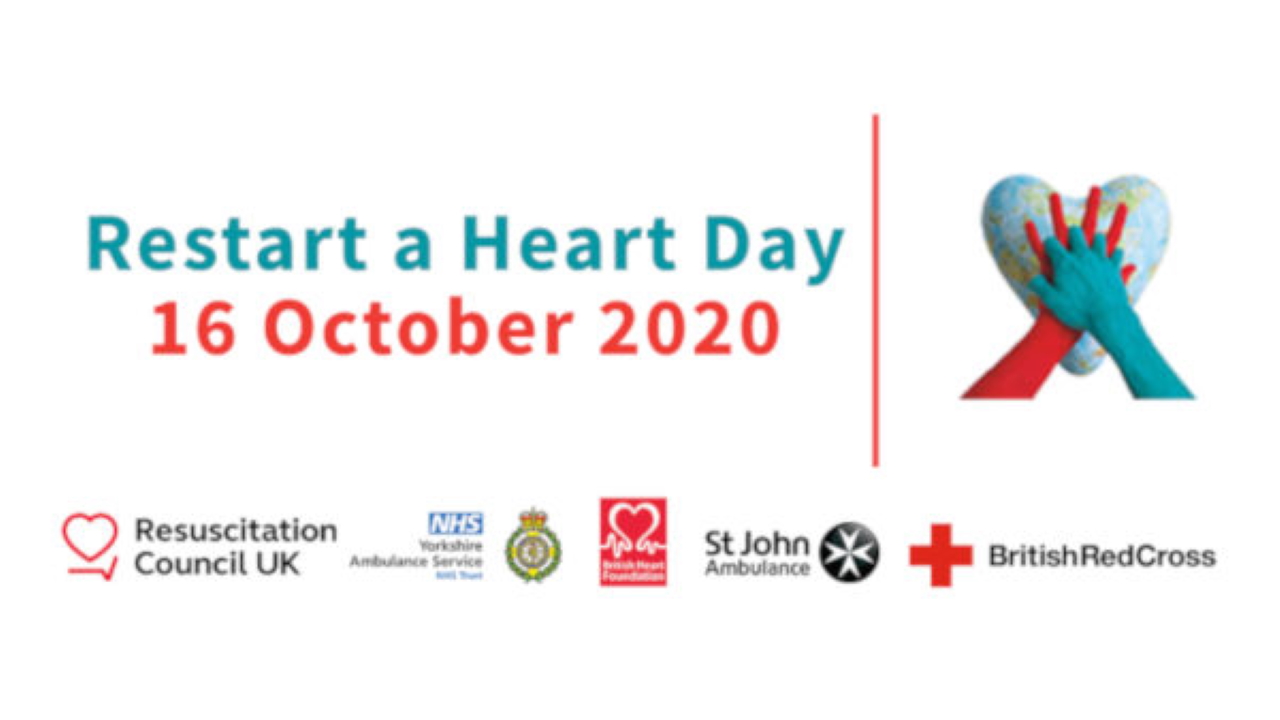Restart a Heart Day, held annually on October 16, aims to raise awareness of the importance of CPR and using a defibrillator. If you come across someone in cardiac arrest, knowing what to do could potentially save their life!
The most important thing to consider when you come across someone who has collapsed is danger. Is there any danger to yourself, or the casualty, nearby? If the danger can be removed safely, for instance by moving a sharp object away from the patient and yourself, then do so. If the danger cannot be removed, stand back and wait for emergency services to arrive. Your safety is paramount!
Once you have assessed any potential dangers, check if the casualty is responsive. If you speak to them, do they respond in any way? If they are unresponsive, you should call emergency services straight away.
Next, check if the patient is breathing. Normally, we would encourage people to put their face near to the casualty to look, listen, and feel for breathing. However, due to Covid-19, we are instructing people to simply look at the patient’s chest to see if it rising and falling.
If the casualty is not breathing, you should inform the emergency services operator and commence CPR straight away. The operator will be able to tell you if there is a defibrillator nearby, and you can ask another bystander to retrieve it for you.
Automatic external defibrillators (AEDs) analyse patients’ heart rhythms. If a rhythm is abnormal, it will deliver a shock in an attempt to restart the patient’s heart. AEDs are really easy to use – they produce audible instructions which guide you through their use it as soon as you turn them on!
CPR stands for cardiopulmonary resuscitation, and is performed to keep blood pumping around a patient’s body, thus ensuring the brain and other vital organs continue to receive oxygen until action can be taken to restart the heart.
Before beginning, you should place one hand on the patient’s forehead and two fingers on their chin. Then, tilt their head back. This moves the tongue away from the patient’s airway, keeping it clear.
To ensure CPR is effective, you need to place your hands on the casualty’s sternum – right in the centre of the chest. For adults, your hands should be interlocked and you should use both hands. Make sure you keep your arms straight!

Using the bottom of the palm of your hand, pump the chest at a rate of 100-120 beats per minute. To help you get this right, think of the chorus of “Staying Alive” by the Bee Gees, or the children’s rhyme “Nelly the Elephant”. For children and infants, the process is slightly different. For children, use one hand instead of two. For babies, you should use two fingers.


Due to Covid-19, rescue breaths are currently not advised. Instead of the normal 30 chest compressions to two rescue breaths ratio, you should just perform continuous chest compressions. Where possible, place a cloth or piece of fabric over the casualty’s face to reduce the risk of Covid-19 transmission.

Compression-only CPR is very effective, and covering the patient’s mouth will not affect the survivability of the patient. The AED will advise you when to move away, allowing it to administer a shock to the patient. Ensure neither yourself nor any bystanders are touching the patient while it does so, then resume CPR immediately afterwards. Be as assertive as you need to be – anyone in contact with the patient while they are shocked will suffer injuries as a result
The London Ambulance Service (LAS) states that when bystander CPR is performed and an AED is used, patients in cardiac arrest have five times the rate of survival compared to when bystanders call emergency services and do not attempt CPR.
Even if you are not confident in your CPR skills, bad CPR is better than no CPR at all!
















